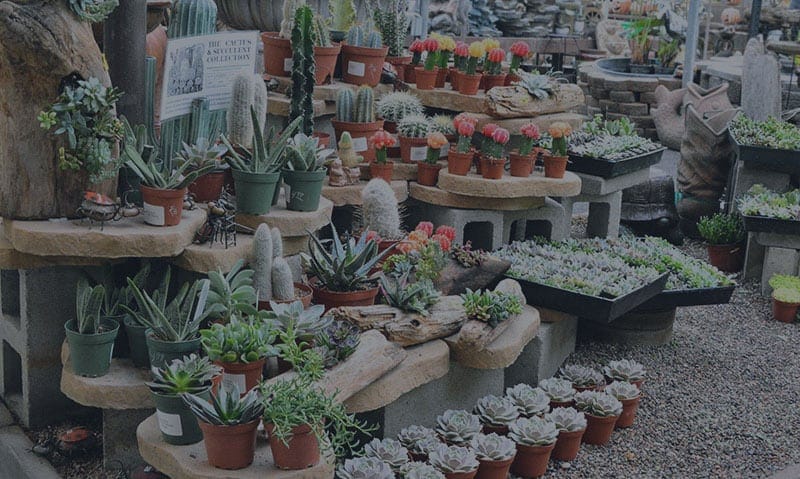Newsletter Articles
These are the Fastest Growing Vegetables for Your SoCal Garden
Written by Kelsey W.
Growing a beautiful vegetable garden is one of the most rewarding ways to use the land around your home, whether that’s the balcony outside your apartment or the lawn in the backyard of your home. However, waiting for the little vegetables to grow and produce their bounty isn’t that easy when all you want to do is pluck the first tomato of the season or cut the first leaf of spinach.
If you’re a super impatient person but you still want the rewarding experience of growing some of your own food, don’t worry! There are some vegetables that you can grow in as little as a month when conditions are right and you pay them the right sort of attention with food, sunlight, and the right soil.
Let’s learn a little bit about the fastest growing vegetables out there, and how you can enjoy a quick bounty or even a few harvests this season.
Leafy Greens are a Great Way to Get Quick Food
In almost every case, the fastest vegetables you can grow will always be various leafy greens. Plants like arugula, spinach, mustard greens, and leaf lettuce take less than a month to reach a harvestable point, although spinach can take a little longer if you’re facing cool weather. The great thing, too, about leafy vegetables is that once they start producing leaves, they remain harvestable for many months.
The trick to getting a bountiful feast of leafy vegetables is adding compost to your soil mixture before you put your plants into the ground. Whether you’re trying to grow them from seed or as seedlings, the plants will love the nutrients provided by the compost. Leafy greens also taste their best when they’re kept moist as their leaves grow, which should reduce any bitterness that could develop.
If you’re keen on having your leafy greens around all season, make sure that you don’t go too crazy by plucking all the leaves off the plant when it’s ready for harvesting. You can honestly keep a plant like kale or Swiss chard growing all season and into next year with the right care, as long as you just pluck a few leaves off with each visit to the plant.
The King of Fast Growers is the Radish
Although leafy greens can produce eatable leaves within a month or so, the real winner when it comes to fast-growing vegetables is the radish. With the right conditions, you can harvest radishes in less than a month and sometimes in as few as three weeks. Plus, radishes are easy to grow and don’t require any complex care. Radishes pull double duty as quick growers and are a great option for beginner gardeners.
Just remember to choose the right variety of radishes because some types take longer to mature than others. Cherry Belle radishes have a reputation for being ready to harvest in just 20 to 22 days. You can also eat the radish sprouts that appear even sooner. Other quick growers are Champion radishes, which reach harvest in about 25 days, and Sparkler radishes, which take about 28 days to mature.
You can also grow radish sprouts on an even quicker timeline. Radish sprouts have a peppery flavor and are just the small seedlings of the plants that will eventually grow radishes. If you pick the radish sprouts early when they appear, you can use them in salads, but if you leave them to grow for a few weeks, they’ll eventually give you radishes.
Microgreens are Quick, But What Are They Anyway?
One of the trendy terms you’ll hear in gardening circles these days is “microgreens,” and the subject is always on the menu somewhere in fashionable restaurants. But what are microgreens? Are they just tiny little plants grown as little miniatures? Are they special species of plants that grow tiny leaves?
In fact, microgreens are just plant seedlings that haven’t started their journey in earnest to grow their vegetables or mature leaves. Microgreens are ready to harvest in as little as a week, but it takes up to three weeks to reach a point where there are enough leaves to harvest. Microgreens have become a popular ingredient because of the belief that their tiny forms are highly packed with nutrients.
You can grow a wide variety of plants as microgreens, and the list includes much more than classic leafy vegetables like kale, arugula, and cabbage. You can also pick the microgreens of broccoli, mustard greens, peas, beets, and radishes. Carrots, chives, and even sunflowers will also produce nutrient-packed microgreens for your table.
Are Impatient Gardeners Restricted to Radishes and Leafy Greens?
If you’re willing to add a week or two to your harvesting timeline, there are some additional vegetables you can plant that will give you a harvest after your lettuce, spinach, and radishes have already started producing. Peas are a great option, especially if you’re willing to put in the effort to keep the plants around for more than a season. They can reach harvest in as little as a month and a half.
Other plants that you can harvest in less than two months include zucchini, cucumbers, carrots, bush and pole beans, and tomatoes. Sometimes, it’ll take up to two months or a little more for these vegetables to really hit their stride and start producing a nice amount of food. However, if you’re really amped to harvest your little vegetable buddies, don’t worry, you’ll have at least a few there to harvest before the plants really start producing.
What About Fast Fruits?
If you’re looking for fast-growing fruit, there aren’t a lot of options out there. It takes years for most citrus plants to even think about producing fruit. While technically you can eat the leaves of citrus plants, they’re usually employed as an aromatic addition to a dish rather than a main course. However, that doesn’t mean all fruit takes years to produce.
Strawberries are probably your best bet if you want reasonably quick fruit production. There are a few different types of strawberries that will actually produce multiple harvests each year, and you can also grow your strawberries for several years in a row, especially in Southern California. A strawberry plant in a container on your porch can produce for several years before it may reach retirement.
However, you have a choice to make when planting your strawberries. You can definitely go for the quick harvest and encourage the plant to grow fast fruit with a healthy dose of fertilizer and a nice amount of water, but a mild amount of patience can really pay off in the long run. Strawberries actually get stronger and produce more berries when you pinch off the first set of flowers before they turn into fruit.
The Most Impatient Gardeners Employ Seedlings
Growing food from a seed is an amazing experience, and it’s hard not to let out a squeal of delight when you see the first leaves of a plant coming up for the first time. However, just getting to that initial point can take weeks, and then you’ve got longer to wait with the initial growth of the plant and all the tender loving care you have to put into a plant that’s so fresh and new.
Fortunately, your local Southern California garden center is the ideal place to visit in the spring because you’ll find all sorts of seedlings that are absolutely ready to go into your container garden or into the ground at your home. Sure, you’ll still have to wait some weeks for the vegetables to become harvestable, but you won’t have to deal with the initial waiting period of growing a plant from a seed.
You can also add plant food and fertilizer to your growing efforts to enjoy greater yields as well as ensure the plants grow as swiftly as possible. If you leave the plants to grow on their own timeline, all they really need is water, but adding some plant food designed for vegetable gardens can encourage plants to produce more and more quickly.
Let Green Thumb Nursery Help You Start a Great Vegetable Garden
It’s time to start your vegetable garden this year, and the plant experts at Green Thumb Nursery are here to help you get started. Let us help you create a wonderful garden, whether you’re new to planting vegetables or you’re an old pro with years of experience. We’ll help make your garden beautiful.
Do you like what you see? Sign up for our weekly newsletter to get content like this every week!
CLICK HERE TO SIGN UP!


